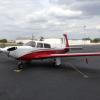New AD to make Aspens VFR only?
-
Members Online
- larryb
- Schllc
- BeachLifeMoon
- 1980Mooney
- 1967 427
- Sue Bon
- Greg Ellis
- PeterRus
- dzeleski
- Flyler
- tcal780
- Steve Dawson
- Fly Boomer
- CCAS
- ottorecker
- slowflyin
- AndreiC
- neilpilot
- MoonFlyer68
- M Terry
- INA201
- eman1200
- Ibra
- Z W
- Pinecone
- Austin
- 231MJ
- exM20K
- Stan
- toto
- Joris
- Gilt
- buddy
- Paul Thomas
- Stefano
- Hoeschen
- Marc_B
- mikey757
- Pasturepilot


Recommended Posts
Join the conversation
You can post now and register later. If you have an account, sign in now to post with your account.